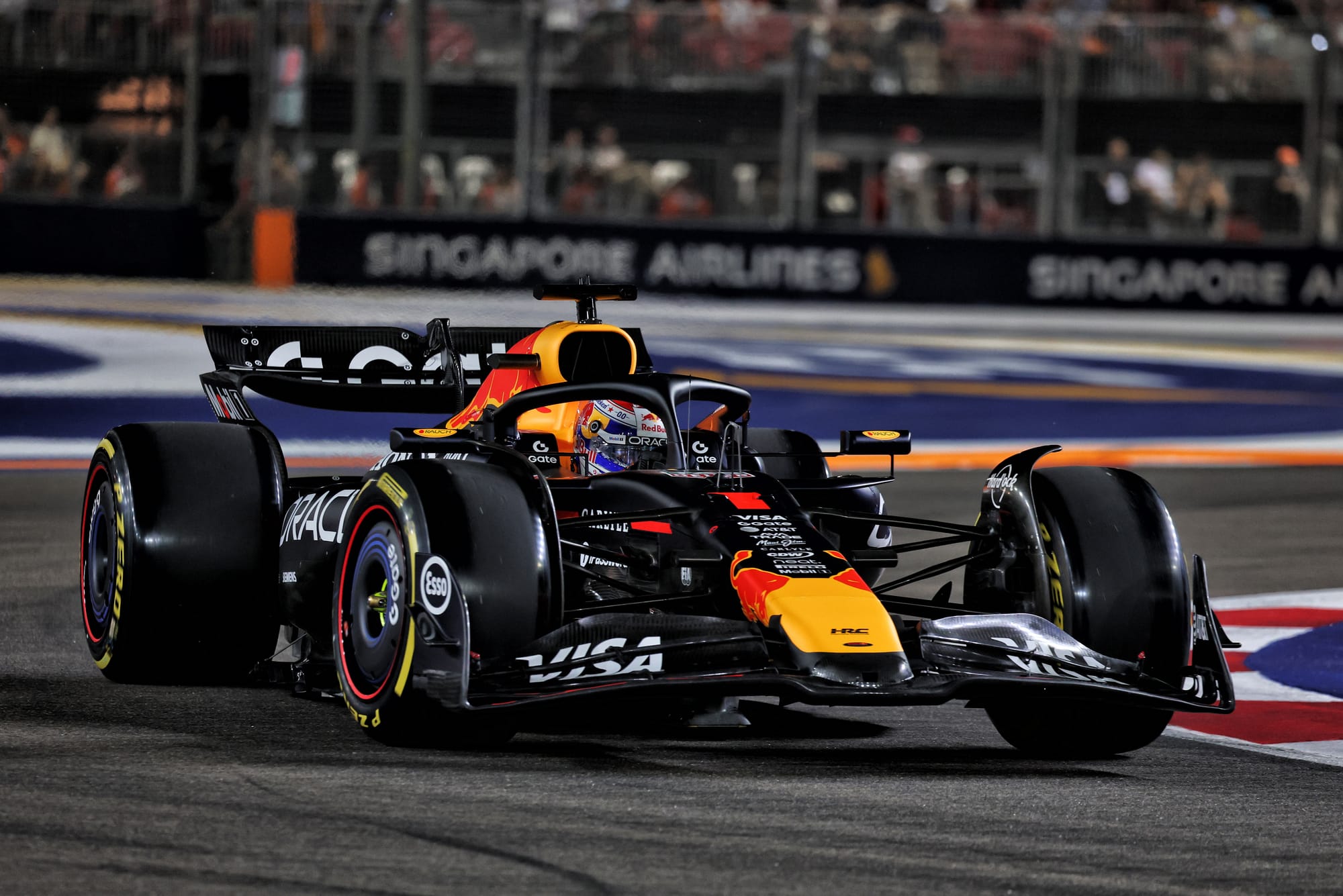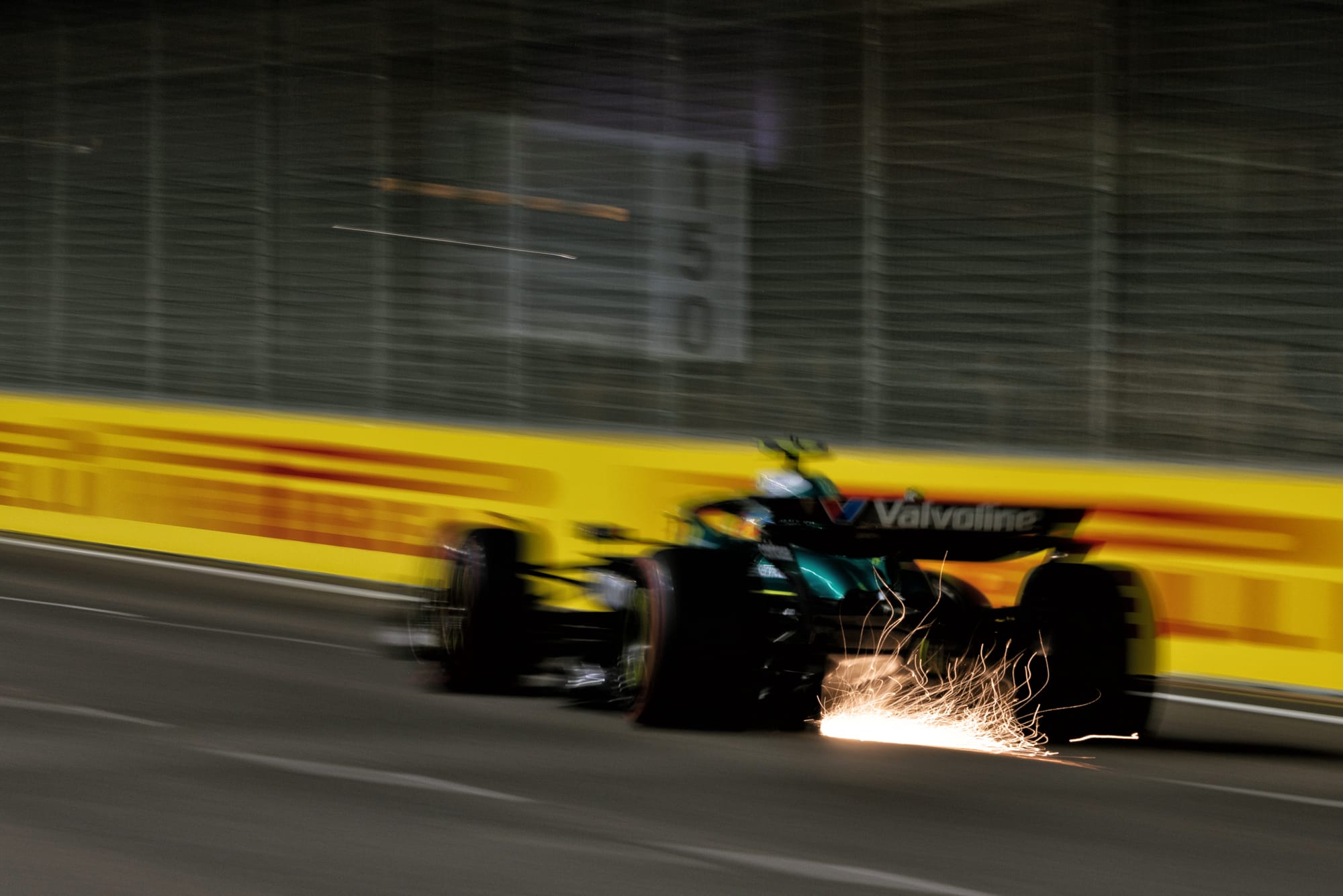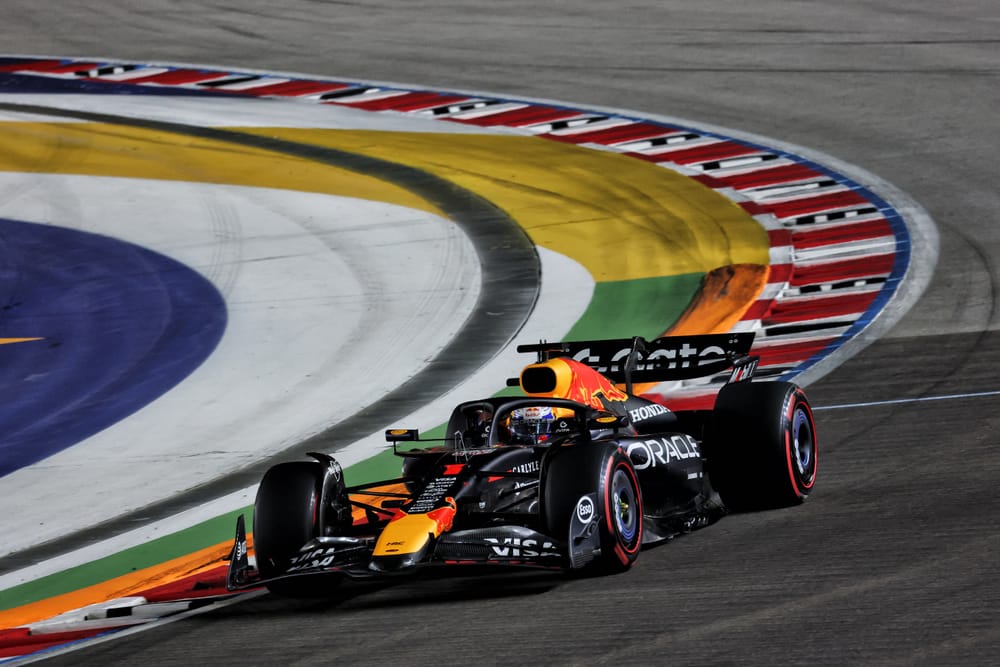The two closely-spaced red flags in second practice, courtesy of George Russell and Liam Lawson respectively, meant there was no extended high-fuel running, giving us less to go on than usual in this Formula 1 Singapore Friday.
But tentatively we can say the following...
Red Bull in the ballpark

Max Verstappen’s Red Bull looks to be in the ballpark around this high-downforce track and this could have big implications for the balance of the season.
The team feels that this was its best Singapore Friday for many years and maybe we can begin to believe that it’s not only low-downforce circuits which allow the RB21 to be competitive now, and that recent balance improvements and the continuing development of its front wing are allowing it to be run with reasonable efficiency even when everyone has fitted their big wings.
This is a cautious assessment given the nature of the session in FP2. Several key drivers (including Verstappen and both McLarens) were unable to complete their first soft tyre push laps because of the Lawson red flag.
Without that first push lap as a platform to build upon on their second push laps, there was noticeably more variation in how they coped. This seeming to hurt Lando Norris in particular, who was half-a-second adrift of his session-heading team-mate Oscar Piastri and only fifth in the headline times.
You might have heard his radio assessment that the shortfall was in his driving and not the car.
The Red Bull hasn’t been fully extended yet in terms of PU modes, but neither have the McLarens.
What we did see was a pretty straight push lap comparison towards the end of the session between Verstappen and Piastri and in this we see that the Red Bull’s tyres are past their best by the end of the lap.
There’s virtually nothing between them through sectors one and two, but in that final few turns Verstappen loses 0.15s to the McLaren.
Into that small gap, Isack Hadjar inserted his Racing Bulls – helped perhaps by his slightly later running as the track was gripping up.
The significant point is that with apparently comparable grip and aero efficiency, the Red Bull seems set to allow Verstappen to compete with McLaren here. At least over a single lap.
Would we have seen the car’s tyre temperature trait more heavily punished over a race stint, had any been done? Quite possibly.
But it’s worth noting that in the few heavily-fuelled laps Verstappen completed in FP1 on the hard tyre, the times were super-consistent (albeit over just four laps). It could be that the tyre trait only rears its head on the soft tyre.
"The car was not too bad, a bit like the last two weekends where there were no major problems," Verstappen said.
"A few things that we want to do better, but it's not like we need to throw around the setup completely so that's a good thing.
"Is it going to be good enough to fight up front? I don't know. I always find FP2 is a bit difficult to say, people are running engine modes, you know, top speed-wise, I guess we'll see in qualifying."
Piastri was more fully into the groove on the first day than Norris, who afterwards summarised his day as follows: “I’m not feeling too great with the car, missing all the feelings I had here last year with it. Oscar’s quick so I have nothing to complain about.”
Aston Martin in the Ferrari/Mercedes mix?

As usual when the track layout demands plenty of downforce and is insensitive to aero efficiency, the Aston Martin is quick.
Take the last tenth or so as part of the team’s usual more aggressive Friday choice of modes and fuel loads when assessing Fernando Alonso’s FP1-heading lap, but this is still a great layout for the car.
Elsewhere, how much of Hadjar’s second-fastest time in FP2 was him and how much car? It’s always a combination of course, but he was relishing threading the responsive Racing Bulls between the walls.
Mercedes’ Kimi Antonelli was the only driver who attempted a race simulation run, which meant forsaking his qualifying simulation amid the disruptions.
He had just set the quickest middle sector on his first attempt as the Lawson red flags came out.
He looked more comfortable with the car than team-mate George Russell even before Russell brought out the first red flags by crunching his Mercedes’ nose into the Turn 16 barriers.
But even Russell reckoned that on the few corners through which he’d pushed the car it had felt much better than in FP1.
More from Singapore
Ridiculous Ferrari-McLaren pitlane crash in disrupted Singapore FP2
Alonso quickest in opening Singapore practice
FIA change gives F1 teams new weight rule headache
F1 drivers have two main doubts for first 'heat hazard' race
Ferrari, with its compliant car and strong low-speed acceleration, should in theory be in good shape here and there were flashes from both Charles Leclerc and Lewis Hamilton.
Hamilton didn’t get in a representative lap after whacking the wall at Turn 14, while Leclerc suffered a major moment on the lap which stood as his best.
The Ferrari looked a handful as the drivers made their push laps, but perhaps nothing that some set up fine tuning won’t fix.



